Introduction
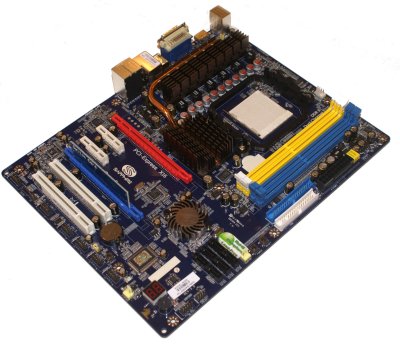
AMD has been on the back-end with its current architecture processors since Intel brought us Core 2. For over four years now AMD has had to play catch up and it seems that every good thing has to come to an end. But while AMD has lost the performance crown to Intel, the Phenom II based processors are extremely cost effective, as are their supporting boards.
Sapphire has been one of AMD's biggest AIBs and has already produced some stellar graphics cards which we have been blessed to test here at TweakTown. Now it's time to start moving into motherboards and so far Sapphire hasn't produced a huge range, but today we have been sent a new candidate for their portfolio.
On the chopping block we have the new PURE CrossFireX 790GX based board using AMD's newest chipset designed for AM2+ and AM3 processors, this being the 790GX. How well will this board compare to our already tested MSI Dragon reference board? - Let's find out.
The Box and What's Inside
Package and Contents
First off, we start as normal with the package and contents. The box that Sapphire ships the board to the retail channel in is a black and green number with the company logo and the board model number shown on the front.
On the back of the box Sapphire puts a colour photo of the board which is very impressive. This gives Sapphire some very big brownie points in our book. Along with the pictures, there is a small amount of marketing info on the board.
Sapphire's software and documentation is rather light; however, while it feels thin, it's got all the info on the board, BIOS and software that is supplied on the DVD which has drivers and applications for both Vista and XP in 32-bit and 64-bit variants, whilst also including some overclocking software from AMD in the form of AMD Overdrive.
If the documentation and software seemed light, the accessories are definitely. There are two SATA data cables out of a total of six that the board supports, one molex to SATA power converter and a single IDE cable. And that's all she wrote.
This is something we have seen before on the Jetway combo board. This switch card is used to split the PCIe x16 lanes. If you want to use a single PCIe x16 card you put this card into the lower x16 slot; when this is done all 16 lanes are diverted to the top slot. When the card is removed, 8 lanes are taken from the top slot and diverted to the lower slot, giving an 8/8 setup.
The Motherboard
The Board
It's board time and Sapphire has done a very interesting job. The 790GX based board has been placed on a full size ATX PCB that is dark blue in colour.
The layout is rather clean for this board. The 24-pin ATX power connector along with the IDE and FDD port are located on the right hand side edge of the board behind the four DDR2 memory slots which are coloured yellow for channel 1 and blue for channel 2.
A 4/8 pin CPU power port is located on the left hand side behind the rear I/O ports and the heat-pipe assembly.
Moving to the storage connectors which are located towards the bottom right of the board, using the SB750 this board gets six native SATA-300 ports which support the major RAID levels as well as AHCI. These ports are not rotated and are facing up like traditional SATA ports, which may pose a problem when using large graphics cards.
AMD's retention design for its heatsinks makes it pretty good for keeping the CPU area clean, as they have a standard footprint. The board follows this and has plenty of room around it to allow large heatsinks to be installed. The CPU is fed its power through a six phase regulation system using solid sate components. A heat-pipe assembly is used to keep the voltage regulators cool. This heat-pipe assembly is used to cool the AMD 790GX Northbridge as well. As for the SB750, this is cooled by a separate heatsink.
Moving to the rear I/O ports, we have a good layout here. First off, since the 790GX has an IGP there are three different monitor options. First is the standard CRT and DVI-I port for traditional monitors. For pure digital connection there is a HDMI port that supports the latest HD video standard and audio passthrough. The rest is pretty self explanatory.
Lastly, we are down to the expansion slots that the board is equipped with. Being Crossfire based, there are two PCIe x16 slots; an orange and a blue. The orange slot is the primary slot and when the switch card is in the blue slot all 16 lanes are set to the orange slot. When the card is removed 8 lanes are stolen away and sent to the blue slot to allow Crossfire operations. Two PCIe x1 slots are placed between the two x16 slots and two legacy PCI slots make up the full compliment.
BIOS and Overclocking
BIOS
Sapphire has used the standard Award Modular BIOS version 6 that we have become quite accustomed to. Overclocking options for the CPU and memory are located under the power user overclock settings menu; however, a few extra settings are hidden under the Advanced Chipset Features menu.
The 790GX chipset has its own onboard graphics processor thanks to ATI's HD Radeon 3300 series. The clock of the GPU is set for a base clock of 700MHz; however, Sapphire gives you the option to overclock the onboard IGP up to 900MHz in 1MHz increments. The disappointing part of this is that the board comes with 128MB of 400MHz GDDR3 memory for its frame buffer and unfortunately you can't overclock this.
Lastly, under the Power User Overclock setting menu there are all the major tweaks like FSB clock, PCIe clocks, memory clocks, ratios, dividers and voltage.
Overclocking
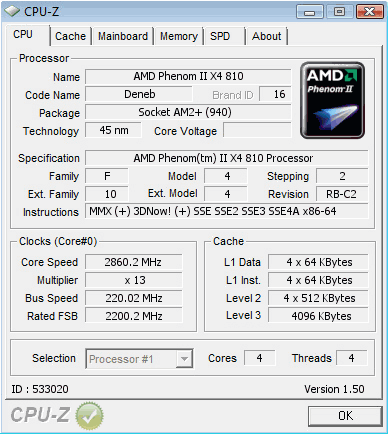
Overclocking on this board wasn't as impressive as we may have thought. With all the tweaks and such we didn't get past 220MHz FSB; however, this did get our CPU up quite a bit nonetheless.
Important Editor Note: Our maximum overclocking result is the best result we managed in our limited time of testing the motherboard. Due to time constraints we weren't able to tweak the motherboard to the absolute maximum and find the highest possible FSB, as this could take days to find properly. We do however spend at least a few hours overclocking every motherboard to try and find the highest possible overclock in that time frame. You may or may not be able to overclock higher if you spend more time tweaking, or as new BIOS updates are released. "Burn-in" time might also come into play if you believe in that.
Test System Setup and Memory Performance
Test System
Processor: AMD Phenom II 810 AM3 (13x200MHz)
Memory: 2x 2GB DDR2-1200 Gskill PI (Supplied by GSkill)
Hard Disk: Intel X25-M 80GB SSD (Supplied by Intel)
Graphics Card: GIGABYTE 9800GX2 1GB (Supplied by GIGABYTE)
Cooling: GIGABYTE 3D Galaxy II (Supplied by GIGABYTE)
Operating System: Microsoft Windows Vista X64 SP1
Drivers: ATI Catalyst 9.1, ForceWare 180.24
Moving to the important stuff now; testing the board. Today we have on the chopping blocks our MSI Dragon reference board for the AM3 based CPU's which supports all current AM2+ CPU's and is again based on the 790GX chipset. This is compared with the Sapphire board to see just what can be accomplished.
Stock settings were done with the memory at 1066MHz which is the highest you can support using AM2+ processors without overclocking. The MSI board wasn't overclocked as it's a bit problematic with FSB adjustments, but we did clock up the Sapphire to 220MHz FSB, keeping the default multiplier and introducing just a slight voltage bump.
EVEREST Ultimate Edition
Version and / or Patch Used: 2006
Developer Homepage: http://www.lavalys.com
Product Homepage: http://www.lavalys.com
Buy It Here
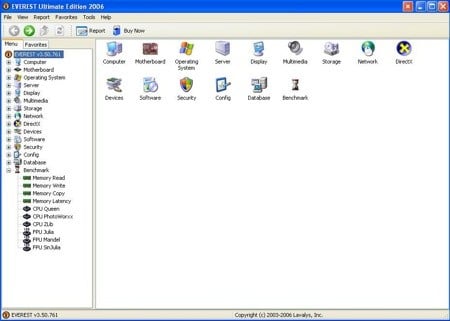
EVEREST Ultimate Edition is an industry leading system diagnostics and benchmarking solution for enthusiasts PC users, based on the award-winning EVEREST Technology. During system optimizations and tweaking it provides essential system and overclock information, advanced hardware monitoring and diagnostics capabilities to check the effects of the applied settings. CPU, FPU and memory benchmarks are available to measure the actual system performance and compare it to previous states or other systems.
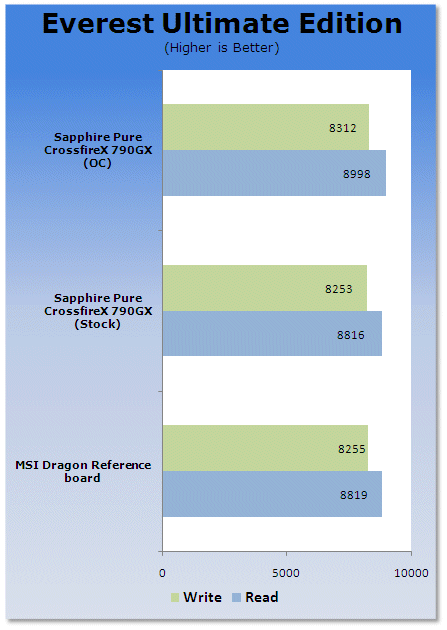
As always, EVEREST is the first on our list. Both setups at stock perform identically thanks to the memory controller being on the CPU die. AMD has done a fantastic job optimizing DDR2 memory performance on their processors. We see that with the overclocking there is an expected jump in memory bandwidth.
Benchmarks - Sisoft Sandra
SiSoft Sandra
Version and / or Patch Used: 2009
Developer Homepage: http://www.sisoftware.co.uk
Product Homepage: http://sisoftware.jaggedonline.com/index.php?location=home&a=TTA&lang=en
Buy It Here
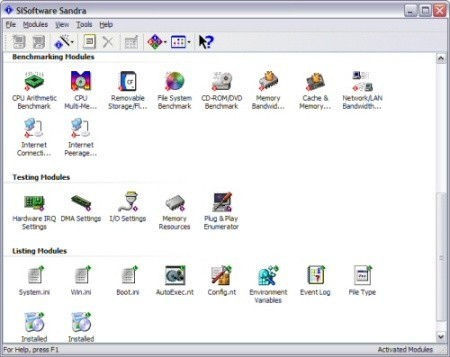
SiSoft Sandra (System ANalyser, Diagnostic and Reporting Assistant) is a synthetic Windows benchmark that features different tests used to evaluate different PC subsystems.
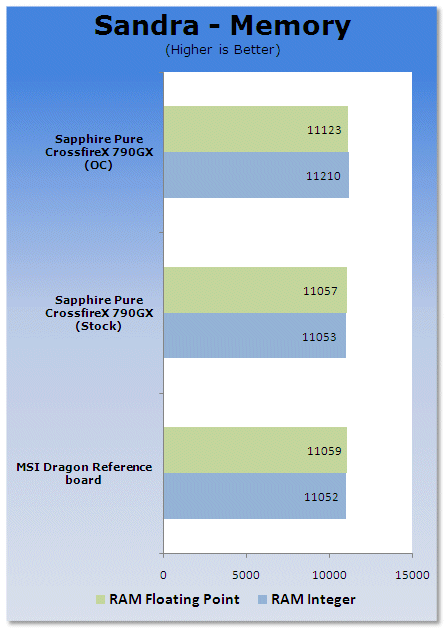
Sandra shows us a similar trend here, so no memory tweaks or tricks are being used by either boards.
Benchmarks - PCMark Vantage
PCMark Vantage
Version and / or Patch Used: Unpatched
Developer Homepage: http://www.futuremark.com
Product Homepage: http://www.futuremark.com/benchmarks/pcmark-vantage//
Buy It Here

PCMark Vantage is the first objective hardware performance benchmark for PCs running 32 and 64 bit versions of Microsoft Windows Vista. PCMark Vantage is perfectly suited for benchmarking any type of Microsoft Windows Vista PC from multimedia home entertainment systems and laptops to dedicated workstations and high-end gaming rigs. Regardless of whether the benchmarker is an artist or an IT Professional, PCMark Vantage shows the user where their system soars or falls flat, and how to get the most performance possible out of their hardware. PCMark Vantage is easy enough for even the most casual enthusiast to use yet supports in-depth, professional industry grade testing.
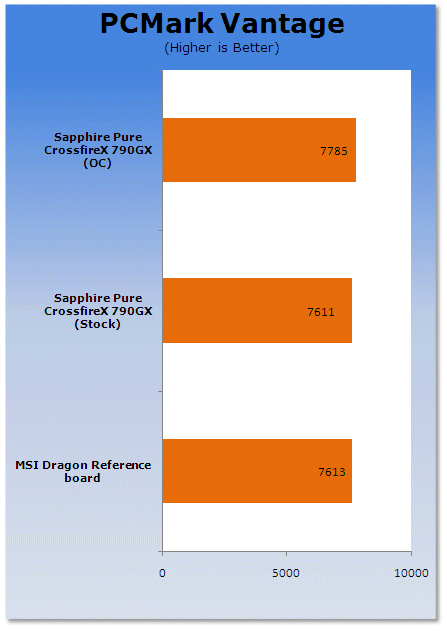
PCMark Vantage doesn't show any discernable winner at stock speeds; however, a slight jump thanks to the increase memory and CPU clock speeds goes to Sapphire when we push the FSB to 220MHz.
Benchmarks - SYSmark 2007 Preview
SYSmark 2007
Version and / or Patch Used: 1.04
Developer Homepage: http://www.bapco.com/
Product Homepage: http://www.bapco.com/products/sysmark2007preview/>

SYSmark 2007 Preview is the latest version of the premier performance metric that measures and compares PC performance based on real world applications.
SYSmark 2007 Preview extends the SYSmark family, which has been widely accepted by IT Managers, PC OEMs, press and analysts worldwide to support Windows Vista™.
SYSmark 2007 Preview allows users to directly compare platforms based on Windows Vista™ to those based on Windows XP Professional and Home.
The new release also incorporates numerous new features and enhancements such as an improved GUI allowing streamlined start-up and run along with a heads-up-display (HUD) and automated error reporting.
SYSmark 2007 Preview is an application-based benchmark that reflects usage patterns of business users in the areas of Video creation, E-learning, 3D Modeling and Office Productivity. This new release includes a robust and refreshed set of applications.
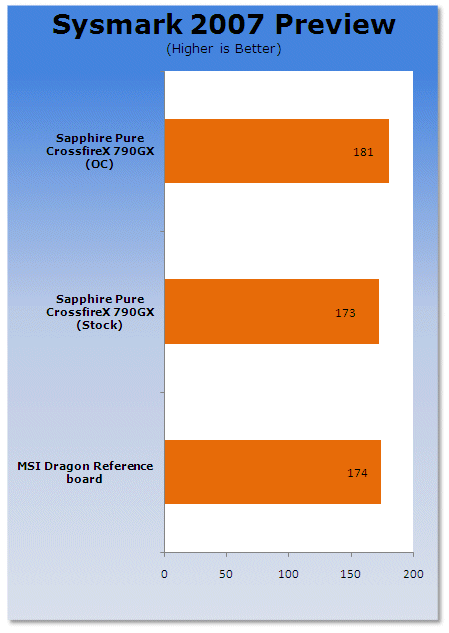
A similar trend is seen in SYSmark 2007, but this is based in the real world application field. We see that Sapphire and MSI tie it up at stock with Sapphire just a bit further in front when overclocking.
Benchmarks - Adobe Premiere Elements 4.0
Adobe Premiere Elements 4.0
Version and / or Patch Used: 4.0
Developer Homepage: http://www.adobe.com
Product Homepage: http://www.adobe.com/products/premiereel/
Buy It Here
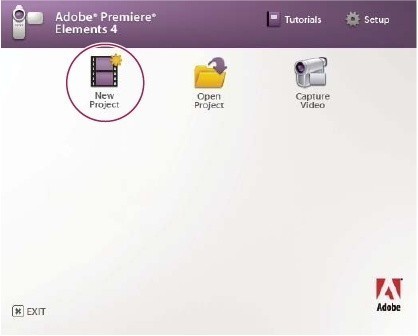
Our test with Adobe Premiere Elements 2.0 is performed with a raw two hour AVI file. It is then compressed into DivX format using the latest version codec. We measure the time it takes to encode and then record CPU usage.
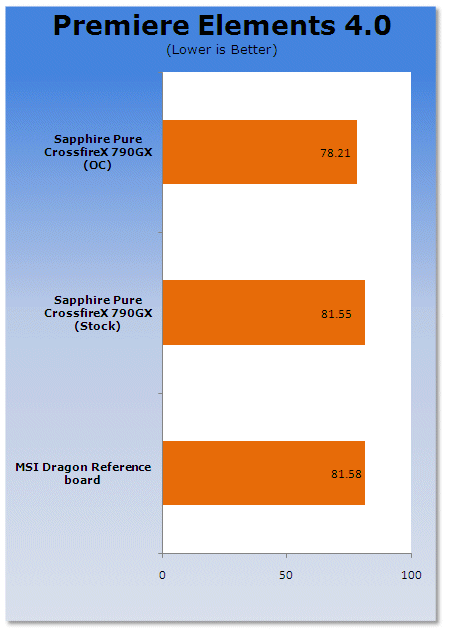
It's now media encoding time and Premiere Elements is a good judge of character. We can see that the performance across the board at stock is extremely tight. We see a bit of time taken off when overclocking comes into it.
Benchmarks - 3DMark Vantage
3DMark Vantage
Version and / or Patch Used: 1.01
Developer Homepage: http://www.futuremark.com
Product Homepage: http://www.futuremark.com/products/3dmarkvantage/
Buy It Here

3DMark Vantage is the new industry standard PC gaming performance benchmark from Futuremark, newly designed for Windows Vista and DirectX10. It includes two new graphics tests, two new CPU tests, several new feature tests, and support for the latest hardware.
3DMark Vantage is based on a completely new rendering engine, developed specifically to take full advantage of DirectX10, the new graphics API from Microsoft.
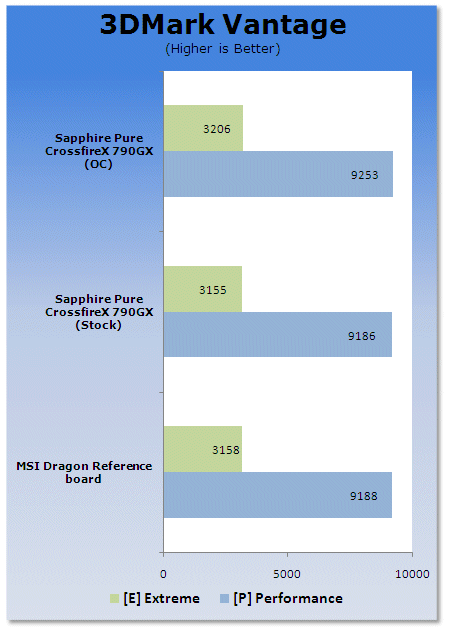
Futuremark's 3DMark Vantage shows no difference at stock speeds; both boards have been equally optimized. When overclocking the Sapphire naturally takes a lead.
Benchmarks - Crysis
Crysis
Version and / or Patch Used: 1.1
Timedemo or Level Used: Custom Timedemo
Developer Homepage: http://www.crytek.com/
Product Homepage: http://www.ea.com/crysis/
Buy It Here
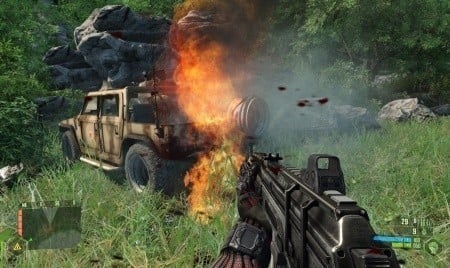
From the makers of Far Cry, Crysis offers FPS fans the best-looking, most highly-evolving gameplay, requiring the player to use adaptive tactics and total customization of weapons and armor to survive in dynamic, hostile environments including Zero-G.
Real time editing, bump mapping, dynamic lights, network system, integrated physics system, shaders, shadows and a dynamic music system are just some of the state of-the-art features the CryENGINE™ 2 offers. The CryENGINE™ 2 comes complete with all of its internal tools and also includes the CryENGINE™ 2 Sandbox world editing system.
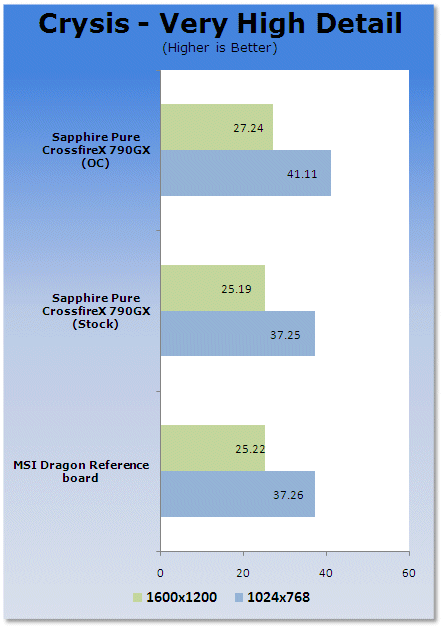
Under real word gaming we see that both setups perform identically at stock speeds.
Power Usage and Heat Tests
Power Consumption
We are now able to find out what kind of power is being used by our test system and the associated graphics cards installed. Keep in mind; it tests the complete system (minus LCD monitor, which is plugged directly into an AC wall socket).
There are a few important notes to remember though; while our maximum power is taken in 3DMark06 at the same exact point, we have seen in particular tests the power being drawn as much as 10% more. We test at the exact same stage every time; therefore tests should be very consistent and accurate.
The other thing to remember is that our test system is bare minimum - only a 7,200RPM SATA-II single hard drive is used without CD-ROM or many cooling fans.
So while the system might draw 400 watts in our test system, placing it into your own PC with a number of other items, the draw is going to be higher.
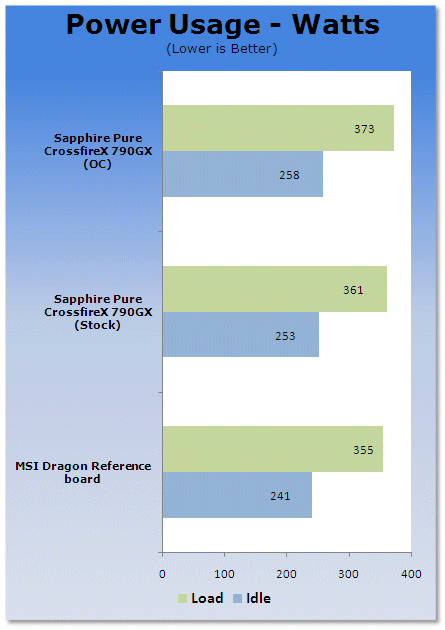
Heat wise we see that the MSI with its DrMOS is able to keep things a bit more power conscious as well as the Greenpower that MSI also uses to keep things under control.
Heat Generation
As a new measure, we are now monitoring the heat generation from the key components on the motherboards, this being the Northbridge, Southbridge (if it contains one) as well as the Mosfets around the CPU. The results are recorded at idle and load during the power consumption tests.
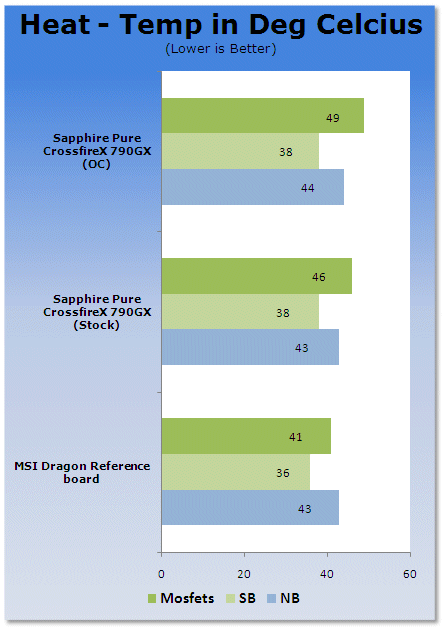
Lastly, heat generation and we see that the MSI board's DrMOS setup manages to keep things cooler.
Final Thoughts
Sapphire has been one of the biggest ATI/AMD players in the graphics card business for over five years now and it's no surprise to see them finally merge out into motherboards. After all, AMD does want as many boards for their own processors based on their own chipsets and their AIB's are the answer to this.
Following a somewhat reference design, the Sapphire board does what it's supposed to; it packs everything you need to get a Dragon system up and running and while there's nothing outstanding about this particular board, it's a good solid robust design with all the necessities in place.
Now, let's see if they will start to bring in any Intel boards. My guess is probably not.









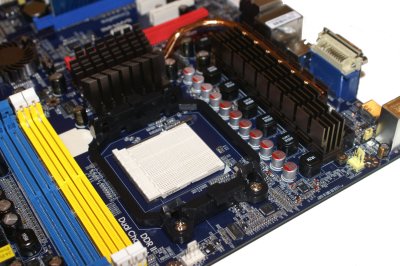






 United
States: Find other tech and computer products like this
over at
United
States: Find other tech and computer products like this
over at  United
Kingdom: Find other tech and computer products like this
over at
United
Kingdom: Find other tech and computer products like this
over at  Australia:
Find other tech and computer products like this over at
Australia:
Find other tech and computer products like this over at  Canada:
Find other tech and computer products like this over at
Canada:
Find other tech and computer products like this over at  Deutschland:
Finde andere Technik- und Computerprodukte wie dieses auf
Deutschland:
Finde andere Technik- und Computerprodukte wie dieses auf